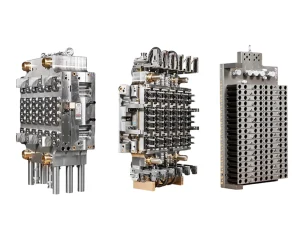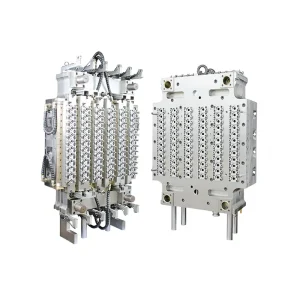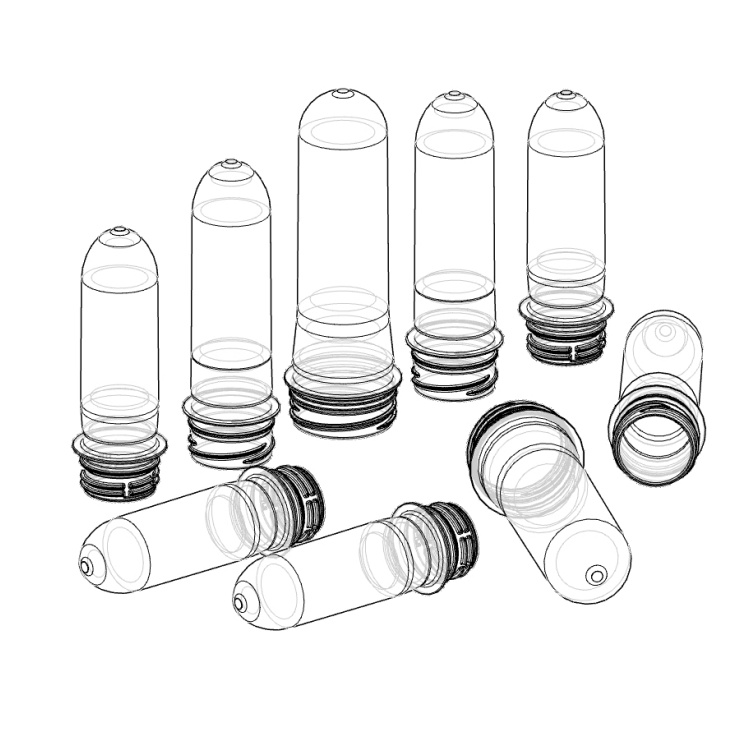How Long Does a PET Injection Mold Last Under Continuous Injection Molding?
Want your PET injection molds to keep going strong and save you money? Find out how choosing tough materials, crafting precise designs, running smart production, and sticking to regular upkeep can make your molds last longer. This cuts downtime, lowers costs, and ramps up your output.

Key Factors That Influence PET Injection Mold Lifespan
The life of PET injection molds hinges on a few big things. You’ve got the materials picked, the design’s accuracy, how the mold’s used in production, and how well it’s looked after. Each one plays a key part in keeping your mold running smoothly and saving cash on the shop floor.
Impact of Material Properties and Mold Steel Selection on Durability
The steel you choose makes a big difference in how long your mold holds up. It decides how well it fights off wear, rust, and heat stress. Top-notch mold steel, like imported high-hardness kinds, bumps up resistance to scratches and corrosion. This stretches the mold’s life. Strong tool steels with good heat flow and toughness are a must for molds in heavy production. Low-quality steel might seem cheaper at first, but it often fails early. For example, a cheap steel mold could crack after a few months of hard use, while a high-grade one keeps chugging along.
Importance of Mold Design Precision for Long-Term Use
A smart design cuts down stress, keeps cooling even, and reduces wear. PET injection molds go through design, machining, and assembly. The design ensures parts form right. Careful machining matters a ton, and assembly pulls it all together. Tiny mistakes in measurements or alignment can mess up resin flow or cause heat issues. These shorten the mold’s life. For instance, a mold that’s off by a hair might overheat in spots, wearing out quicker.
Effect of Processing Conditions and Cycle Parameters on Mold Longevity
How you run the mold is super important. Things like cycle time, injection pressure, resin temperature, and cooling speed affect how much strain the mold takes. Bad settings push the mold too hard. For example, rushing cycles without enough cooling can overheat parts, speeding up damage. A well-placed cooling channel system keeps temperatures steady. This boosts production speed and saves energy per part, helping the mold last longer.
Role of Maintenance Practices in Extending Mold Life
Even top molds break down without care. Check for wear regularly. Clean off sticky resin buildup. Oil moving parts to keep them smooth. Skipping these steps leads to more breakdowns and expensive repairs. For example, wiping the mold down after each shift stops buildup that could harm it over time.
Expected Lifespan of a PET Injection Mold
No single answer fits every mold’s lifespan. It depends on how it’s used and cared for. But industry guidelines give a rough idea based on the job and how much you’re producing.
Typical Industry Benchmarks for Mold Longevity
Good PET injection molds can last 1 million to 5 million cycles if you do everything right. This varies based on how rough the resin is, how hard the cycles hit, and how well you maintain the mold. For instance, a mold making simple water bottle preforms might reach 5 million cycles, but one for tricky shapes might wear out faster. The 72-cavity PET preform injection mold is built tough and precise. It keeps parts consistent and cuts cycle times. These molds are made to handle rough, high-volume jobs.
Comparison of Prototype Molds and Production Molds
Prototype molds are thrown together quick with cheaper materials for short runs. They usually last just tens of thousands of cycles. Production molds are built to go the distance. They use hardened steel and smart cooling systems, ready for millions of shots. For example, a prototype mold might test a new soda bottle design, while a production mold pumps out thousands daily.
Impact of Continuous Operation on PET Mold Durability
Running a mold non-stop can wear it out faster, especially if it’s not made for constant use or lacks strong cooling.
Effects of Thermal Stress from High-Volume Production
Heating and cooling over and over make the mold expand and shrink. Without good cooling channels or tough materials, this stress causes tiny cracks or warping. The integrated PET preform mold cavity helps control these issues, keeping the mold steady during long runs.
Wear Patterns from Repeated Injection Cycles
Each cycle rubs hot PET against the mold’s surface under high pressure. Over time, this grinds down spots like gates or neck rings. Wear-resistant coatings can slow this. For example, an uncoated mold might get scratched up after a few months of heavy use.
Damage from Resin Type or Additives
Recycled PET or bio-based resins with bits of junk can hurt the mold. These can cause pitting or chemical damage unless the mold has protective coatings like DLC or rust-proof alloys. The 72-cavity PET preform injection mold supports recycled PET processes, boosting wear resistance and keeping parts steady.
Extending Mold Life Through Better Manufacturing Techniques
Clever production tricks can make your PET injection molds last way longer and work better.
Benefits of High-Performance Tool Steel in Modern Molds
High-quality steels fight off heat shock and wear while staying accurate. This is key for multi-cavity molds where every part must match. A mold with premium steel can handle millions of cycles without losing shape. The 72-cavity PET preform injection mold is made from top materials, ensuring toughness and precision.

Effectiveness of Surface Treatments in Reducing Wear
Coatings like diamond-like carbon (DLC) lower friction between resin and the mold. They also shield against damage from additives or cleaners. BJY’s innovative coating greatly boosts wear resistance, preventing peeling. For example, a coated mold might last twice as long as an uncoated one in rough conditions.
Improvement of Stability Through Cooling System Optimization
Smart cooling channels spread heat evenly across the mold. This speeds up cycles and cuts down heat-related damage. For instance, a mold with good cooling can run faster without overheating, making it last longer.
Maintenance Strategies to Preserve Your Investment
A solid upkeep plan stops little issues from becoming big headaches. This gets you more bang for your buck from PET injection molds.
Importance of Scheduled Preventive Maintenance
Regular upkeep is non-negotiable. Clean vents and gates often. Check ejector pins for alignment problems. Oil moving parts to keep them slick. Look for cracks or rust. These steps stop big breakdowns during busy runs. For example, a weekly check can catch a loose pin before it wrecks the mold. BJY’s modular structure makes cleaning and maintenance a breeze.
Failure Modes to Monitor Closely
Keep an eye on common problems like gate wear, misaligned pins or bushings, or blockages from leftover resin. Spot these with regular checks or smart sensors in newer systems. For instance, a clogged hot runner might slow things down, but catching it early saves bigger trouble.
Maximizing ROI When Investing in a New PET Injection Mold
Your return on investment isn’t just about the mold’s cost. It’s about how much you get out of it over time, and picking the right partner is key.
Criteria for Selecting a Mold Based on Output Needs
Consider your part weight needs (light or thick-walled), how many cavities you need (16–144), and if the mold works with your resin. Quick-switch options matter if you change products often. BJY can tailor mold dimensions and runner layouts to fit your machines. For example, a mold for thin water bottles needs different settings than one for heavy jars.
Importance of Partnering With an Experienced Manufacturer
A great partner doesn’t just sell molds. They tweak designs to match your equipment, offer flexible order sizes, and provide support after setup. They also offer OEM/ODM branding, which helps if you’re expanding into new markets.
FAQs
Q: How many cycles does a high-quality PET injection mold last?
A: A well-made production mold can last 1 million to 5 million cycles, depending on material quality, operating conditions, and maintenance routines.
Q: Is it safe to use recycled PET in existing molds?
A: Yes, but only if the mold has abrasion-resistant coatings like DLC or rust-resistant alloys to handle impurities. It supports recycled PET processes.
Q: Can I retrofit an older injection machine with modern multi-cavity molds?
A: Yes, as long as the mold matches your machine’s clamping force, nozzle spacing, and hot runner setup. Versatile compatibility makes BJY’s molds work with many injection molding machines.



